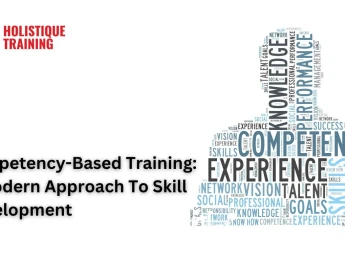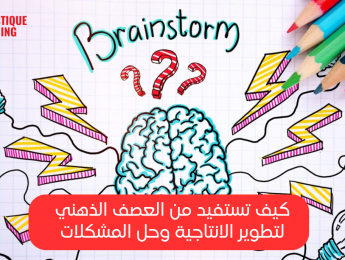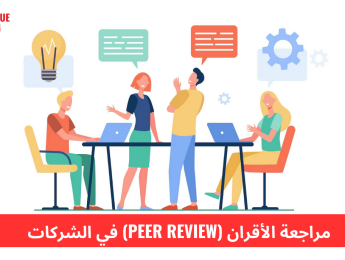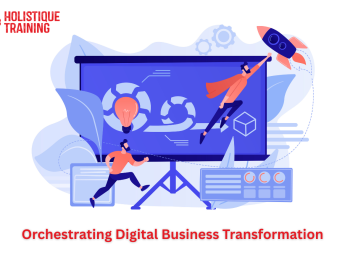في عالم العمل المتسارع والمتغير باستمرار، أصبح التدريب والتطوير المهني أمرًا أساسيًا لضمان بقاء المؤسسات في صدارة المنافسة. مع تقدم التكنولوجيا، تطورت أساليب التدريب بشكل كبير لتشمل تقنيات وأساليب مبتكرة تلبي احتياجات الموظفين وتساعدهم على اكتساب مهارات جديدة بسرعة وكفاءة. من التدريب عبر الإنترنت إلى استخدام الواقع الافتراضي والذكاء الاصطناعي، أصبحت الأساليب الحديثة توفر بيئة تعليمية تفاعلية ومرنة. في هذا الدليل الشامل، سنتعرف على أحدث أساليب التدريب التي تسهم في تحسين الأداء الشخصي والمؤسسي، وكيفية تطبيق هذه الأساليب للحصول على أقصى استفادة في بيئة العمل الحديثة.
ما هي أساليب التدريب الحديثة؟
أساليب التدريب الحديثة تركز بشكل كبير على استخدام التكنولوجيا والابتكار في عملية التعلم لزيادة الفاعلية وتعزيز التفاعل. من أبرز هذه الأساليب هو التدريب الإلكتروني (e-learning)الذي يتيح للمتدربين الوصول إلى المحتوى التدريبي عبر الإنترنت في أي وقت ومن أي مكان، مما يوفر الوقت والجهد ويزيد من مرونة التعلم. بالإضافة إلى ذلك، تعتمد العديد من المنظمات على التدريب التفاعلي الذي يشجع المتدربين على المشاركة النشطة من خلال الأنشطة الجماعية، النقاشات، وحل المشكلات بشكل عملي. التدريب المعتمد على الواقع الافتراضي (VR)أصبح أيضًا من الأساليب المبتكرة حيث يتيح للمتدربين محاكاة بيئات العمل الفعلية وتطبيق المهارات في سياقات واقعية دون المخاطرة.التدريب باستخدام الألعاب (Gamification)هو أسلوب آخر يعتمد على إدخال عناصر الألعاب في العملية التدريبية لزيادة التحفيز والتفاعل، مما يجعل التعلم أكثر متعة ويعزز قدرة المتدربين على تذكر المعلومات. أما التعلم المعتمد على المشاريع فهو يركز على تعزيز المهارات العملية من خلال تطبيق المعرفة في مشروعات حقيقية أو محاكاة لسيناريوهات العمل. كذلك، يعتبر التعلم الاجتماعي من الأساليب الحديثة التي تركز على التعلم من خلال التفاعل مع الآخرين وتبادل المعرفة في بيئات مفتوحة، سواء كانت عبر الإنترنت أو في مجموعات عمل حية. جميع هذه الأساليب تهدف إلى تقديم تجربة تعلم شاملة، مرنة، تفاعلية، وعملية تساعد المتدربين على اكتساب المهارات بطرق مبتكرة، مما يساهم في تحسين الأداء المهني وتعزيز التطور الشخصي.

تأثير التكنولوجيا على أساليب التدريب التقليدي
تأثير التكنولوجيا على أساليب التدريب التقليدي كان كبيرًا في تغيير الطريقة التي يتم بها التعليم والتدريب في مختلف المجالات. في الماضي، كان التدريب يعتمد بشكل أساسي على المحاضرات المباشرة، والكتب الدراسية، والأنشطة التي تقتصر على الحضور الشخصي، مما جعل العملية التعليمية محدودة في نطاقها ومرهقة من حيث الوقت والمكان. ومع تطور التكنولوجيا، أصبح التدريب أكثر مرونة، حيث أتاح التدريب الإلكتروني (e-learning)للمتدربين الوصول إلى المحتوى التعليمي في أي وقت ومن أي مكان عبر الإنترنت، مما ساهم في إزالة الحدود الجغرافية والزمانية. كما أدت الوسائط المتعددة مثل الفيديوهات، والرسوم المتحركة، والألعاب التعليمية إلى تحسين التفاعل بين المتدربين والمحتوى، مما يزيد من فعالية التعلم مقارنة بالأساليب التقليدية. التكنولوجيا مكنت أيضًا من استخدام الواقع الافتراضي (VR)والواقع المعزز (AR)، مما يسمح للمتدربين بتجربة المحاكاة العملية في بيئات آمنة دون المخاطرة. إضافة إلى ذلك، أصبح التدريب التفاعلي أكثر فاعلية بفضل منصات التعلم عبر الإنترنت التي توفر بيئات تعليمية تتيح التفاعل الفوري بين المتدربين والمدربين. التكنولوجيا ساعدت أيضًا في تطبيق التدريب المخصص، حيث يمكن للمتدربين الوصول إلى محتوى يناسب مستوى معرفتهم واحتياجاتهم الشخصية، بدلاً من الاعتماد على المحتوى الثابت في الأساليب التقليدية. بالتالي، أتاح تقدم التكنولوجيا تحسين أساليب التدريب من خلال جعلها أكثر تفاعلية، مرونة، وملاءمة لاحتياجات المتدربين، مما يعزز فعالية العملية التعليمية.
أساليب التدريب التقليدية مقابل أساليب التدريب الحديثة؟
المعيار | أساليب التدريب الحديثة | أساليب التدريب التقليدية |
التقنية المستخدمة | تعتمد على التكنولوجيا مثل التعلم الإلكتروني، الواقع الافتراضي، الذكاء الاصطناعي. | تعتمد على الطرق التقليدية مثل المحاضرات، والتدريب المباشر في الفصول الدراسية. |
التفاعل والمشاركة | تشجع على التفاعل والمشاركة من خلال المنتديات الرقمية، والأنشطة التفاعلية، واستخدام المنصات الإلكترونية. | التفاعل محدود ويقتصر على الأسئلة والمناقشات داخل الفصل. |
المرونة في التعلم | توفر مرونة عالية في الوقت والمكان، حيث يمكن للمتدربين الوصول إلى المواد في أي وقت ومن أي مكان. | تتطلب الحضور في مواعيد محددة في مكان محدد. |
التكلفة | أقل تكلفة، حيث يمكن تنفيذ الدورات عبر الإنترنت أو باستخدام التطبيقات المخصصة. | تكلفة أعلى بسبب الحاجة إلى أماكن تدريب، وتكاليف التنقل، والأدوات المادية. |
التقييم والمتابعة | تستخدم تقنيات التقييم التفاعلية مثل الاختبارات عبر الإنترنت وتتبع الأداء في الوقت الفعلي. | التقييم يكون غالبًا من خلال الامتحانات التقليدية أو التقييم الشفوي. |
تلبية احتياجات التعلم المختلفة | توفر طرق متنوعة مثل الفيديوهات، المقالات، التمارين التفاعلية لتناسب أساليب التعلم المختلفة. | غالبًا ما تقتصر على أسلوب واحد مثل الاستماع إلى المحاضرات أو التدريب العملي. |
التحفيز والمشاركة | تستخدم أساليب تحفيزية مثل الألعاب التعليمية، والتعلم من خلال المشاريع. | غالبًا ما تكون المحاضرات والمعلومات تقتصر على الجانب النظري دون تطبيقات عملية كافية. |
السرعة في التعلم | توفر التعلم الذاتي والتعلم المستمر بما يناسب سرعة التعلم الخاصة بكل فرد. | تعتمد على سرعة الفصل بأكمله مع وجود قيود زمنية في التدريب. |
التدريب عبر الإنترنت والتعليم عن بُعد
التدريب عبر الإنترنت والتعليم عن بُعد هما أسلوبان تعليميان يتيحان للمتدربين والطلاب الحصول على المعرفة والمهارات بدون الحاجة إلى التواجد الفعلي في مكان التعلم. يعتمد كلا الأسلوبين على استخدام التكنولوجيا الحديثة، مثل الإنترنت ومنصات التعلم الإلكترونية، لتقديم المحتوى التعليمي وتيسير التواصل بين المتدربين والمدربين أو المعلمين.
التدريب عبر الإنترنت:
يشير إلى البرامج التدريبية التي يتم تنفيذها عبر الإنترنت، مما يسمح للمتدربين بالتعلم عن بُعد باستخدام أجهزة الحاسوب أو الهواتف الذكية. يشمل التدريب عبر الإنترنت مجموعة متنوعة من الأساليب مثل المحاضرات المسجلة، والندوات الحية، والاختبارات الإلكترونية، وأدوات التعاون مثل المنتديات والمناقشات الجماعية. يتميز هذا النوع من التدريب بالمرونة العالية حيث يمكن للمتدربين الوصول إلى المواد التدريبية في أي وقت ومن أي مكان.
التعليم عن بُعد:
هو نوع من التعليم الذي يتيح للطلاب دراسة المواد الأكاديمية دون الحاجة إلى الحضور الشخصي إلى الفصول الدراسية. يشمل التعليم عن بُعد المحاضرات عبر الإنترنت، والفصول الدراسية الافتراضية، والمحتوى التعليمي الذي يتم تقديمه من خلال منصات إلكترونية. كما يتضمن تفاعل الطلاب مع المعلمين والزملاء عبر البريد الإلكتروني، المنتديات، أو تطبيقات الدردشة، مما يساهم في تحقيق بيئة تعليمية متكاملة عن بُعد.
الفوائد:
من أهم الفوائد التي يقدمها كلا الأسلوبين هي المرونة من حيث الوقت والمكان، مما يتيح للمتعلمين التكيف مع جداولهم الشخصية. كما يساهم في تقليل التكاليف المتعلقة بالسفر والانتقال إلى مراكز التدريب أو الجامعات، مما يجعلهما خيارًا مثاليًا للأشخاص الذين لا يستطيعون حضور دورات تدريبية أو دراسات أكاديمية تقليدية.
التحديات:
رغم الفوائد العديدة، فإن هذه الأساليب قد تواجه تحديات مثل نقص التفاعل الشخصي بين المتدرب والمعلم، وصعوبة في الحفاظ على التركيز والانضباط الذاتي. كما أن بعض المتدربين قد يواجهون صعوبة في استخدام التكنولوجيا الحديثة.

دور الذكاء الاصطناعي في تخصيص برامج التدريب
يساهم الذكاء الاصطناعي بشكل كبير في تخصيص برامج التدريب من خلال استخدام تقنيات التعلم الآلي وتحليل البيانات لتحسين تجربة المتدربين وزيادة فعالية البرامج التدريبية. من أبرز الطرق التي يساهم بها الذكاء الاصطناعي في تخصيص التدريب هي:
- تحليل احتياجات المتدربين:يستخدم الذكاء الاصطناعي البيانات المجمعة حول مستوى المعرفة والمهارات لدى المتدربين لتحديد احتياجاتهم التعليمية بدقة. بناءً على ذلك، يمكن تخصيص المحتوى التدريبي لتلبية تلك الاحتياجات، مما يسمح بتوفير تجربة تعلم مخصصة لكل فرد.
- تقديم محتوى مخصص:يقوم الذكاء الاصطناعي بتوفير محتوى تدريبي مخصص بناءً على سلوك المتدرب أثناء التدريب، مثل سرعته في اجتياز المهام أو الموضوعات التي يواجه صعوبة فيها. هذا يسمح بتقديم مواد تعليمية تناسب مستواه وتوجهاته، مما يعزز من قدرته على التعلم.
- التعلم الذاتي:من خلال التفاعل الذكي، يستطيع الذكاء الاصطناعي تعديل المحتوى تدريجيًا بما يتناسب مع تقدم المتدرب. على سبيل المثال، إذا كان المتدرب يتقن موضوعًا معينًا بسرعة، يمكن للذكاء الاصطناعي تقديم محتوى أكثر تحديًا له، بينما إذا كان يعاني من صعوبة في فهم موضوع معين، يوفر له محتوى إضافي لمساعدته على الفهم.
- التنبؤ بأداء المتدربين:باستخدام تقنيات التعلم الآلي، يمكن للذكاء الاصطناعي التنبؤ بأداء المتدربين بناءً على سجلاتهم السابقة، مما يتيح للمدربين تخصيص برامج التدريب بشكل أفضل واحتواء التحديات المستقبلية التي قد يواجهها المتدربون.
- التفاعل الفوري:يستخدم الذكاء الاصطناعي في تطبيقات الدردشة الذكية (chatbots)لتقديم ردود فورية على استفسارات المتدربين، مما يعزز من التجربة التعليمية ويساعدهم في التغلب على العوائق التي قد تواجههم أثناء التدريب.
بفضل هذه القدرات، يُعد الذكاء الاصطناعي أداة قوية لتحسين تخصيص برامج التدريب، مما يؤدي إلى تجربة تعلم أكثر فعالية ومستدامة.
مع تطور التكنولوجيا والابتكار في مجال التدريب، أصبح من الضروري على المؤسسات تبني الأساليب الحديثة التي تساهم في تطوير مهارات موظفيها بشكل مستمر. من خلال الاستفادة من التقنيات المتقدمة مثل الواقع الافتراضي، التعليم المدمج، والذكاء الاصطناعي، يمكن تحسين كفاءة التدريب وتعزيز تجربة التعلم. إن التحول نحو أساليب التدريب الحديثة لا يقتصر فقط على تطوير المهارات، بل يعزز أيضًا من ثقافة الابتكار والتفاعل داخل المؤسسات. من خلال اعتماد هذه الأساليب، يمكن للمؤسسات تجهيز موظفيها للتحديات المستقبلية وتطوير بيئة عمل أكثر إنتاجية وفعالية.






















